The banjo, with its distinctive twang and upbeat rhythm, has captured the hearts of music lovers around the globe. Its infectious sound transports listeners to the roots of folk and bluegrass music, evoking images of front porch jam sessions and lively hoedowns. But how challenging is it to learn this captivating instrument? While the learning curve may be steep for some, with dedication, practice, and a deep love for music, anyone can embark on a rewarding journey to master the art of playing the banjo. Join us as we delve into the complexities of fingerpicking patterns, explore the rich history of banjo music, and discover the sheer joy of creating your own melodies on this unique instrument. Get ready to pluck, strum, and pick your way to banjo bliss!
Is It Hard To Learn Banjo?
Is Banjo Easier to Learn Than Guitar?
The banjo and the guitar are two distinctive string instruments, each with its own characteristics and learning curves. When comparing the two, the guitar, with its six strings, can be more complex than a four or five-string banjo. The fingerpicking techniques required for the banjo can be intricate, but once mastered, they provide a solid foundation that is consistent across many songs, making it easier to progress. In contrast, the guitar may demand a wider range of chords and techniques, which can be challenging for beginners. However, the versatility of the guitar allows for a broader exploration of musical styles and genres.
When deciding which instrument is easier to learn, it often comes down to individual preference and the style of music one wishes to play. Some may find the rhythmic and melodic nature of the banjo more appealing, while others may be drawn to the harmonies and versatility of the guitar. To truly discover which instrument resonates more with you, it’s wise to try both and explore the unique experiences each one offers. In the end, whether you choose the banjo or guitar, the joy of learning and playing music will undoubtedly bring fulfillment and creative expression to your life.
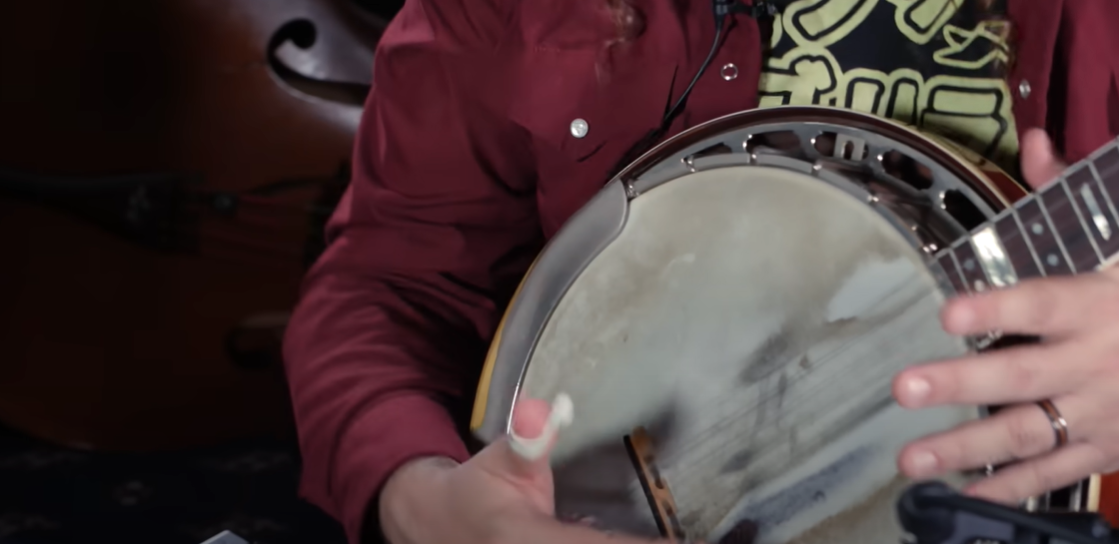
Is Banjo a Good Beginner Instrument
Yes, the banjo can indeed be an excellent instrument for beginners. Despite its unique playing style, the banjo offers a forgiving learning curve for novices. The instrument is meticulously designed in a manner that allows even a simple strum to produce a delightful and melodious sound. Moreover, compared to many other string instruments, the banjo typically features fewer strings, usually four or five, which can help alleviate the initial overwhelm experienced by beginners.
So, if you find yourself captivated by the idea of embracing a string instrument, the banjo stands out as an excellent choice. Its unique qualities, coupled with the abundance of resources and the motivation it can inspire, make the banjo a truly rewarding instrument to explore and master.[1]
How Long Does it Take to Learn to Play The Banjo?
The time it takes to learn to play the banjo can vary widely depending on individual factors such as personal commitment, practice time, and aptitude for music. For someone starting as an absolute beginner, it may take a few weeks of consistent practice to become comfortable with the basic chords and strumming patterns. Progressing to the point of being able to play simple songs could take a few months of dedicated effort.
However, achieving mastery of the banjo is a long-term commitment that can take anywhere from a few years to a lifetime. It involves continuous learning, exploring different playing techniques, and refining musical expression. The key to successfully learning the banjo, or any instrument for that matter, is regular and focused practice. Even dedicating just 15 to 30 minutes of practice daily can result in noticeable improvement over time.
It’s important to keep in mind that learning an instrument is not a race, but rather a journey. The joy of playing the banjo comes not just from reaching a specific destination, but also from the ongoing process of learning, discovering new techniques, and continuously improving your skills. Embrace the journey and enjoy the fulfillment that comes from the beautiful sounds you’ll create along the way.[2]
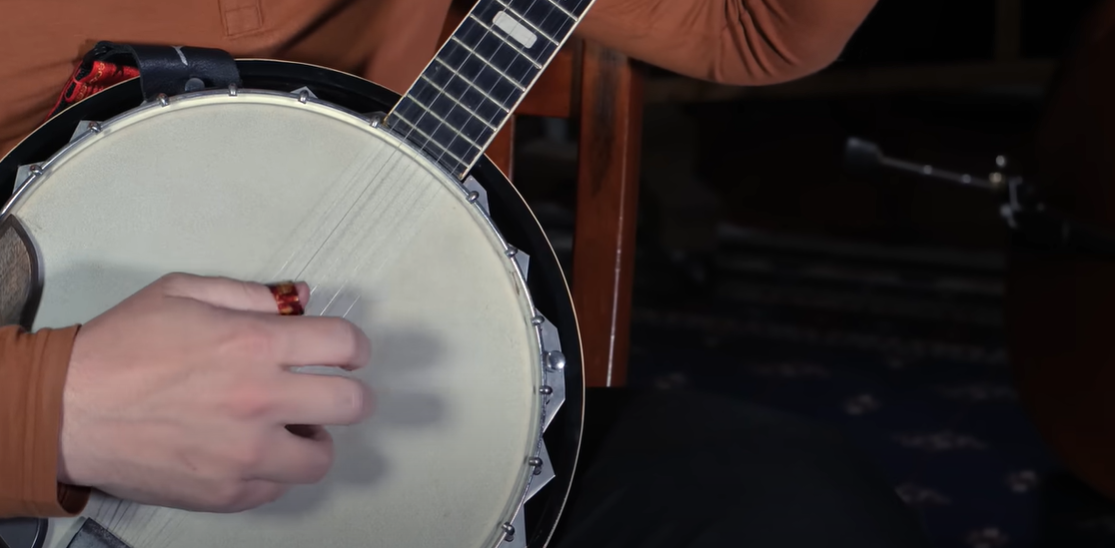
Which Banjo Style is Easiest to Learn?
For beginners, the clawhammer style on an open-back banjo is often recommended as the easiest to start with. This style, rooted in traditional Appalachian music, involves a down-picking motion where the strings are struck with the back of the fingers in a rhythmic pattern. The clawhammer technique requires fewer intricate finger movements than other styles, making it more accessible for new players.
Another style considered beginner-friendly is the three-finger Scruggs style, named after bluegrass legend Earl Scruggs. This style, played on a resonator banjo, involves fingerpicks and a series of rolls or arpeggios which, once mastered, can be used in many songs. The resonator banjo, with its metal body, produces a brighter and louder sound compared to the open-back banjo.
Regardless of the style you choose, remember that practice and patience are the key to learning any instrument, including the banjo. As you progress, you can explore more advanced techniques and incorporate your own unique musical expression. The banjo offers a rich and diverse sound that can be enjoyed in various genres, from traditional folk to modern bluegrass and beyond. So, embrace the journey, have fun, and let the banjo’s vibrant melodies fill your heart and soul.[2]
Getting Started Playing The Banjo
Learn how to tune the banjo
Tuning is not only a crucial starting point but also a fundamental aspect when it comes to playing any string instrument, banjo included. An out-of-tune banjo fails to produce the sweet and distinctive sound that this remarkable instrument is renowned for. To help you on your tuning journey, here’s a comprehensive guide that provides a little more detail:
- Identify the Strings: A standard 5-string banjo consists of strings tuned to G, D, G, B, and D, starting from the lowest to the highest. The fifth string (G) is the shortest and should be positioned at the fifth fret.
- Use a Tuner: Consider investing in a digital tuner, as they are not only affordable but also highly accurate. Clip-on tuners that attach directly to the banjo’s headstock can be particularly handy. Alternatively, you can opt for tuner apps available on your smartphone.
- Tune Each String: Begin by tuning the lowest string (4th string, D). Pluck the string and gradually adjust the tuning peg until the tuner indicates that you have reached the correct pitch (D). Repeat this process for the 3rd string (G), 2nd string (B), and 1st string (D). For the 5th string, ensure that it is tuned to the higher G note.
- Check the Tuning: Once you have tuned each string, it’s time to put them to the test. Try playing a few chords and evaluate how they sound together. Minor adjustments may be required to achieve optimal harmony.
- Regularly Retune: Keep in mind that strings can easily go out of tune due to changes in temperature, humidity, or simply from being played. Make it a habit to regularly tune your banjo to ensure it consistently delivers its best sound.
Remember, tuning may require a bit of practice, so don’t be disheartened if you don’t achieve perfection right away. With time, you’ll develop an ear for tuning, and it will become a natural part of your routine as you play this wonderful instrument.

Learn to strum the banjo
Learning to strum the banjo effectively forms a significant part of your journey to becoming a proficient player. Here are some steps to help you get started:
- Understand the Basic Strumming Pattern: Banjo strumming typically follows a specific pattern. For clawhammer style, the basic strumming pattern is ‘bum-ditty’. The ‘bum’ is a downstroke on one string, and ‘ditty’ is a downstroke across multiple strings followed by a thumb stroke on the fifth string. Start by practicing this pattern slowly and steadily, focusing on the sound and feel of each strum.
- Hold the Banjo Correctly: The way you hold your banjo can significantly affect the sound produced. Always hold your banjo so that it’s parallel to the floor, allowing your strumming hand to move freely over the strings without any obstructions from your body or the banjo itself. This ensures optimal control and comfort while playing.
- Master the Downstroke: In many banjo styles, strumming primarily involves downstrokes. To achieve a crisp and clear sound, use the back of your fingernails to strum the strings in a downward motion. Remember, the motion should come from your wrist and not your arm, allowing for better precision and agility.
- Practice Strumming Different Chords: Start with simple chords like G and C, as they are commonly used in banjo playing. Practice strumming these chords in a steady rhythm and focus on smoothly transitioning between them. This exercise will help you get comfortable with changing chords while maintaining the strumming pattern, enhancing your overall playing ability.
- Increase Your Speed Gradually: Once you can strum slowly and maintain a steady rhythm, gradually increase your speed. It’s important to keep the rhythm consistent while gradually pushing yourself to play faster. This gradual increase in speed will help you build dexterity and control over the banjo strings.
- Try Different Strumming Patterns: Once you are comfortable with the basic strumming pattern, it’s time to experiment with different patterns and rhythms to diversify your playing. Explore various styles like fingerpicking, rolls, and alternate strumming patterns to add depth and versatility to your banjo playing.
Remember, strumming is all about rhythm and timing. To develop a steady rhythm, practice regularly with a metronome, which will help you internalize the timing and keep you in sync with the beat. It may feel challenging at first, but with persistent practice, strumming will become second nature, allowing you to create beautiful music on your banjo.[3]
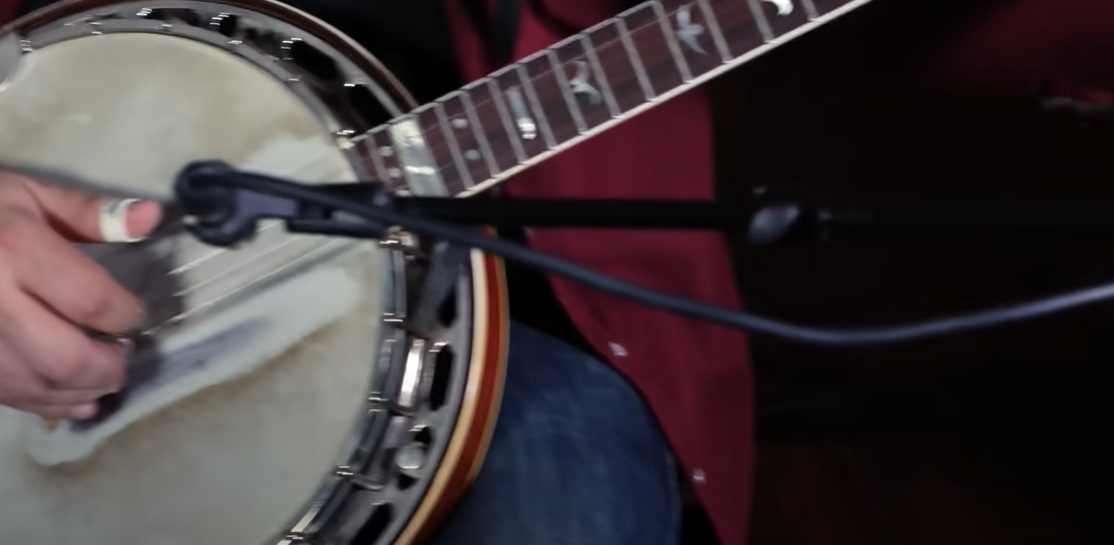
FAQ
How long does it take to learn the banjo?
The time it takes to learn the banjo can vary greatly depending on several factors. Firstly, your previous musical experience plays a significant role in how quickly you grasp banjo playing techniques. If you have a solid foundation in music theory or proficiency in other string instruments, you may find it easier to pick up the banjo. Additionally, the amount of practice you dedicate to learning the banjo is crucial. Regular and focused practice sessions will undoubtedly expedite your progress.
Furthermore, the style of banjo playing you wish to learn also influences the learning curve. If you’re aiming to play simple folk tunes or basic melodies, you may start playing these within a few weeks of consistent practice. However, if you aspire to master more intricate techniques like bluegrass or clawhammer, it may require several months, or even up to a year, of dedicated effort. These styles demand precision and intricate fingerpicking patterns that take time to develop.
It’s important to remember that learning any musical instrument is a journey that unfolds at its own pace. The joy of playing the banjo comes not only from mastery but also from the learning process itself. Embrace each step of the journey and find delight in the progress you make along the way. Ultimately, the measure of success should be the enjoyment you derive from playing and the personal growth you experience, rather than solely focusing on the level of skill attained.
Can I teach myself to play the banjo?
Yes, with the wealth of resources available today, it is entirely possible to teach yourself to play the banjo. The internet is brimming with instructional videos, online music lessons, forums, and tutorials that can guide you through the learning process at your own pace. Books, DVDs, and self-teaching guides also provide valuable insights into banjo techniques, chord structures, and songs. Additionally, joining online banjo communities and forums can connect you with fellow learners and experienced players who can offer guidance and support.
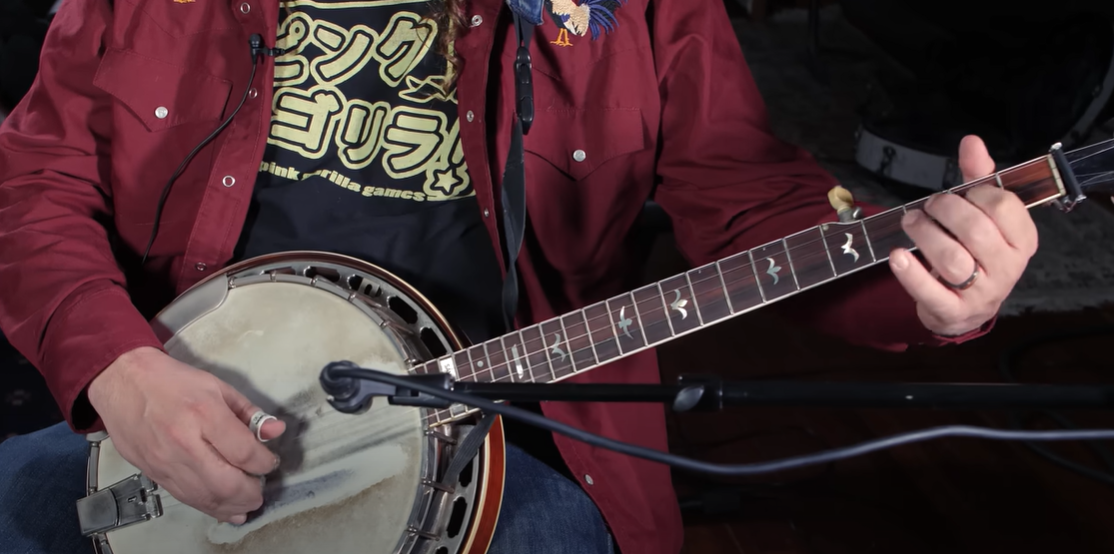
However, it’s important to maintain a disciplined practice schedule, even while learning on your own. Setting aside dedicated time each day or week to practice can help you progress and develop your skills. It’s also beneficial to break down your practice sessions into smaller, focused segments, working on specific techniques or songs.
An added benefit of teaching yourself is the flexibility it offers; you can learn at your own pace and focus on the areas that interest you most. Whether you’re drawn to bluegrass, folk, or other banjo genres, you can tailor your learning journey to explore the styles and techniques that captivate you. You can also experiment with different playing styles and techniques to find your unique sound.
While self-learning can be a fulfilling and rewarding experience, it can also be beneficial to supplement your self-study with occasional lessons. Working with a banjo instructor can provide personalized guidance, help refine your technique, and offer feedback on your progress. They can also introduce you to new playing styles, expand your repertoire, and challenge you to reach new levels of proficiency.
Remember, whether you’re learning independently or taking formal lessons, patience, consistency, and enjoying the process are key to your musical journey. Embrace the challenges, celebrate your progress, and savor the joy of creating music with the banjo.
Is it harder to play a banjo than a guitar?
The difficulty of learning to play the banjo compared to the guitar can depend on various factors, including personal aptitude, musical background, and individual preferences. Generally, while both instruments require dedication and practice, the banjo offers some unique characteristics that may affect the learning process.
When it comes to basic chords and strumming patterns, the banjo can be perceived as simpler than the guitar. The fewer strings on a banjo can make it easier to navigate and fret chords, especially for beginners. Additionally, the banjo’s distinct sound and style can be appealing to those looking for a different musical experience.
However, it’s important to note that certain playing styles unique to the banjo, such as clawhammer or Scruggs style picking, may pose more significant challenges compared to traditional guitar techniques. These styles require specific finger movements and coordination that may take time and practice to master. Additionally, banjo strings are typically tensioned at a higher pitch, which might require firmer finger pressure and precision.
Ultimately, the difficulty in learning any instrument is subjective and depends on individual perseverance, practice, and passion. It’s important to approach learning with an open mind and a willingness to embrace the challenges and rewards that come with it. Whichever instrument you choose to learn, the key is consistent practice, patience, and above all, enjoying the musical journey.
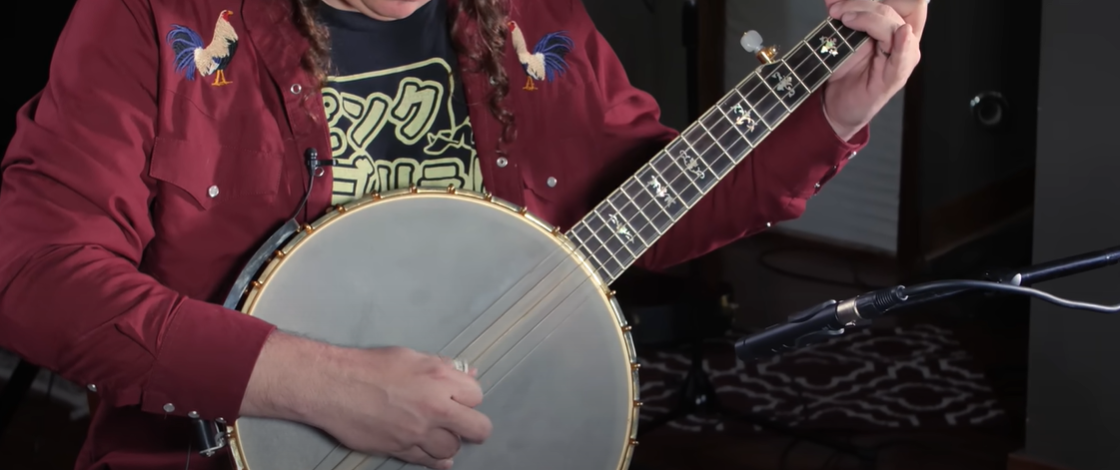
Are banjos hard to learn?
Learning any musical instrument, including the banjo, is a unique and fulfilling journey that comes with its own set of challenges and rewards. The level of difficulty can vary depending on several factors, such as your prior musical experience, your dedication to practice, and the specific style of banjo playing you wish to master.
While the basic strumming patterns and chords on a banjo can be simpler compared to other stringed instruments like the guitar, there are unique banjo techniques, such as clawhammer or Scruggs style, that can present more significant challenges. These techniques require precise finger movements and coordination, adding an extra layer of complexity to the learning process. Additionally, the banjo’s high-tension strings might require firmer finger pressure, which can be initially tough for beginners to adjust to.
However, it’s important to note that these challenges should not discourage potential learners. With consistent and focused practice, most beginners can start playing simple tunes on the banjo within a few weeks. There are numerous resources available to support your learning journey, including online lessons, instructional videos, and self-teaching guides. These resources can provide valuable guidance and tips tailored to your specific needs, helping you progress at your own pace.
The key to successfully learning the banjo, as with any musical instrument, lies in patience, regular practice, and a genuine love for the learning process. Embrace the challenges as opportunities for growth and celebrate the small victories along the way. As you immerse yourself in the world of banjo music, you’ll discover a rich and vibrant community of fellow banjo enthusiasts who are always willing to share their knowledge and experiences.
So, take that first step, pick up your banjo, and embark on a musical adventure filled with joy, self-expression, and the satisfaction of mastering a truly unique instrument.
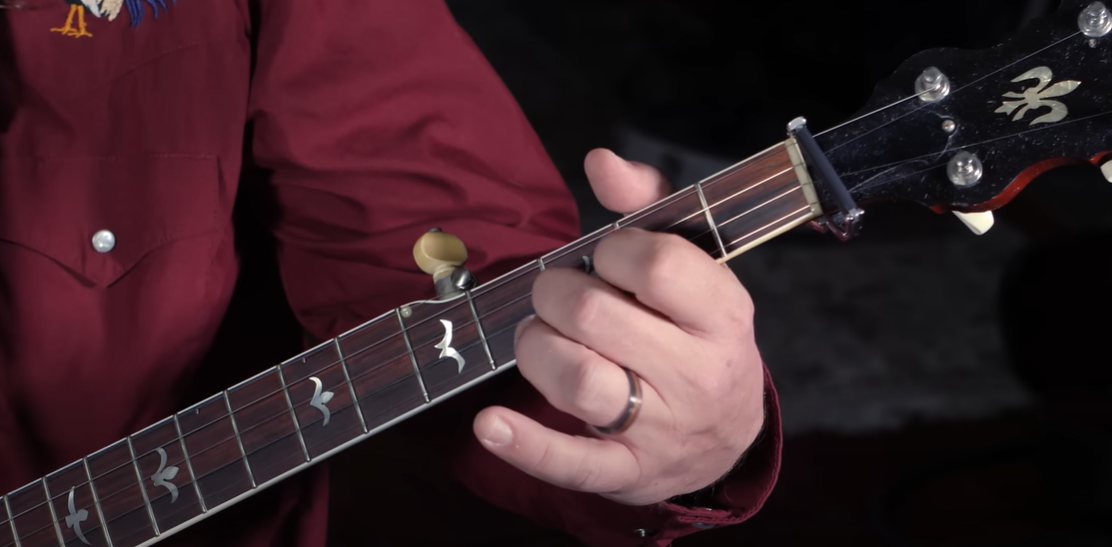
Is 30 too old to learn banjo?
Absolutely not! Age is not a barrier when it comes to learning a musical instrument, and the banjo is no exception. In fact, adults often have certain advantages over younger learners — they usually possess better focus, more patience, and a deeper appreciation for the subtleties of music. Learning a new instrument as an adult can be incredibly rewarding, providing a productive outlet for creativity and stress-relief. Many adults start learning banjo in their 30s, 40s, 50s, and even beyond, proving that it’s never too late to embark on this musical journey.
Imagine the joy of strumming the banjo strings, feeling the resonance of each note as it fills the air. Picture yourself mastering the unique techniques and rhythms that make the banjo such a captivating instrument. With each practice session, you’ll uncover new melodies and explore the harmonies that only the banjo can produce.
Not only will learning the banjo ignite your passion for music, but it will also enhance your cognitive abilities. Studies have shown that playing a musical instrument sharpens your memory, improves concentration, and boosts problem-solving skills. It’s like a workout for your brain, keeping it agile and nimble.
Moreover, the banjo community is welcoming and supportive, offering a network of fellow enthusiasts who share your love for this distinctive instrument. From jam sessions to workshops, you’ll have countless opportunities to connect with other banjo players, exchange tips and tricks, and deepen your understanding of the banjo’s rich history and cultural significance.
So, regardless of your age or musical background, don’t hesitate to embark on this musical journey with the banjo. Remember, the key to learning any instrument is not the age at which you start, but the consistency of practice, the dedication to the task, and the joy you derive from creating music. Let the banjo be your gateway to a world of melody, rhythm, and personal fulfillment.
Can anyone play the banjo?
Yes, absolutely anyone with an interest in music can learn to play the banjo! Whether you’re a complete beginner or have prior musical experience, picking up this versatile instrument is within reach. It may seem daunting at first, but with patience, practice, and a genuine willingness to learn, you’ll soon find yourself strumming along to your favorite tunes.
The banjo’s unique sound and distinct style make it a popular choice for various musical genres. From the twangy melodies of country and folk to the energetic rhythms of bluegrass and even the improvisations of jazz, the banjo can adapt to a wide range of musical styles. Its versatility makes it an excellent option for those interested in participating in jam sessions or band settings, where the banjo can add a vibrant and captivating element to the overall sound.
Learning to play an instrument like the banjo doesn’t just unlock the ability to create music; it also offers numerous cognitive benefits. Research suggests that learning to play an instrument can improve memory, enhance coordination, and increase concentration. So, whether you’re a young beginner or a seasoned musician looking to expand your repertoire, picking up the banjo can be a rewarding and enriching journey.
Regardless of your age or musical background, if you have a genuine passion for music and the commitment to practice, there’s no doubt that you can learn to play the banjo. So why not embark on this musical adventure and explore the captivating world of banjo playing? The possibilities are endless, and the joy of making music awaits!
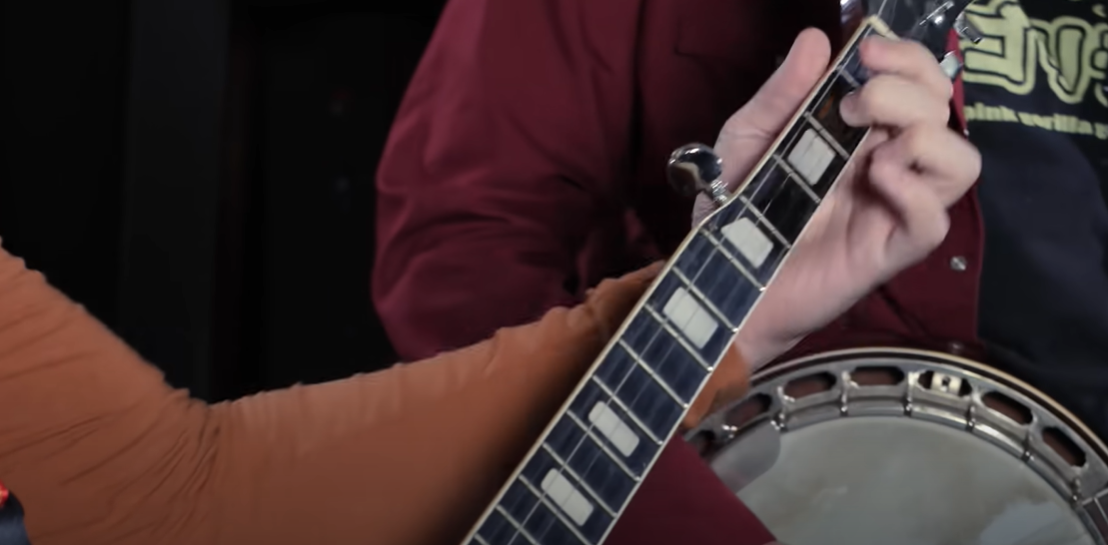
Is it OK to play banjo without finger picks?
Yes, you can definitely play the banjo without finger picks. Finger picks are commonly used in bluegrass and other styles that require a strong, clear sound or intricate picking patterns. They provide a distinct tone and allow for precise note articulation. However, it’s important to note that they are not mandatory for playing the banjo.
If you prefer a softer sound or if you’re just starting out, playing with your bare fingers can be more comfortable and forgiving. It allows for a more organic and intimate connection with the instrument. In fact, some banjo styles, such as the traditional clawhammer style, are often played without picks.
That being said, using finger picks can offer some benefits. They can help protect your fingers from the tension of the strings, especially when playing for extended periods. They also provide a consistent tone and volume, which can be advantageous in certain musical settings.
Ultimately, whether or not to use finger picks is a matter of personal preference, comfort, and the style of banjo playing you wish to pursue. It’s worth experimenting with both approaches to find your own unique sound and playing style. Remember, the banjo is a versatile instrument, and there is no one-size-fits-all approach when it comes to playing it.
Useful Video: Beginner Banjo Progress: First Month (AMAZING!!!) (MUST WATCH)
Conclusion
In essence, learning to play the banjo, like any instrument, is a captivating and transformative journey unique to each individual. It is a path shaped by various factors, including personal aptitude, musical background, practice regimen, and, most importantly, passion. The banjo, with its distinctive sound and style, offers a truly rewarding and fulfilling experience for musical exploration.
This musical journey is accessible to anyone, regardless of age or previous musical experience. Whether you’re a seasoned musician looking to expand your repertoire or a complete beginner eager to embark on a new musical adventure, the banjo opens up a world of possibilities. While it presents its own set of challenges, such as high-tension strings and unique playing techniques, these obstacles can be overcome with patience, dedication, and consistent practice. The banjo invites you to explore its rich history and diverse range of genres, from traditional bluegrass to contemporary folk and beyond.
Moreover, the decision to utilize aids such as finger picks depends on personal preference and the specific banjo style one aspires to master. Finger picks can enhance the clarity and precision of your playing, allowing you to fully express your musical ideas. They can also add a distinctive tone and texture to your banjo sound. However, some players prefer the natural feel and connection with the strings that comes from playing with bare fingers. Ultimately, the choice is yours, and experimenting with different techniques and approaches can help you find your unique voice on the banjo.
Ultimately, the joy of playing the banjo, or any instrument for that matter, lies not solely in the pursuit of mastery, but in the beautiful and enriching learning process itself. As you delve into the world of banjo music, you’ll discover the joy of discovering new melodies, experimenting with different rhythms, and expressing yourself through the instrument. The banjo becomes a conduit for your emotions, allowing you to tell stories and evoke feelings with every pluck of the strings. It’s a journey of self-discovery and personal growth, where you constantly push the boundaries of your musical abilities.
Therefore, anyone considering embarking on this musical adventure should not be deterred by perceived difficulties, but rather encouraged by the boundless opportunities for personal growth, cognitive benefits, and the pure bliss of creating music. The banjo invites you to dive into a world of soulful melodies and rhythmic expressions, where every pluck of the strings tells a story and every note resonates with emotion. Embrace this extraordinary endeavor and unlock the limitless potential that awaits you on this enchanting banjo journey. Let the banjo be your guide as you explore the beauty of music and discover the musician within you.
References:
- https://blog.deeringbanjos.com/how-hard-is-it-to-learn-to-play-the-banjo
- https://www.stringvibe.com/is-it-hard-to-learn-banjo/
- https://www.palmspringsmusiclessons.com/blog/is-banjo-hard-to-learn




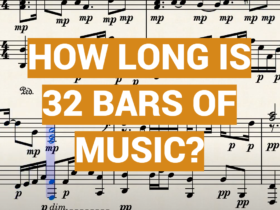
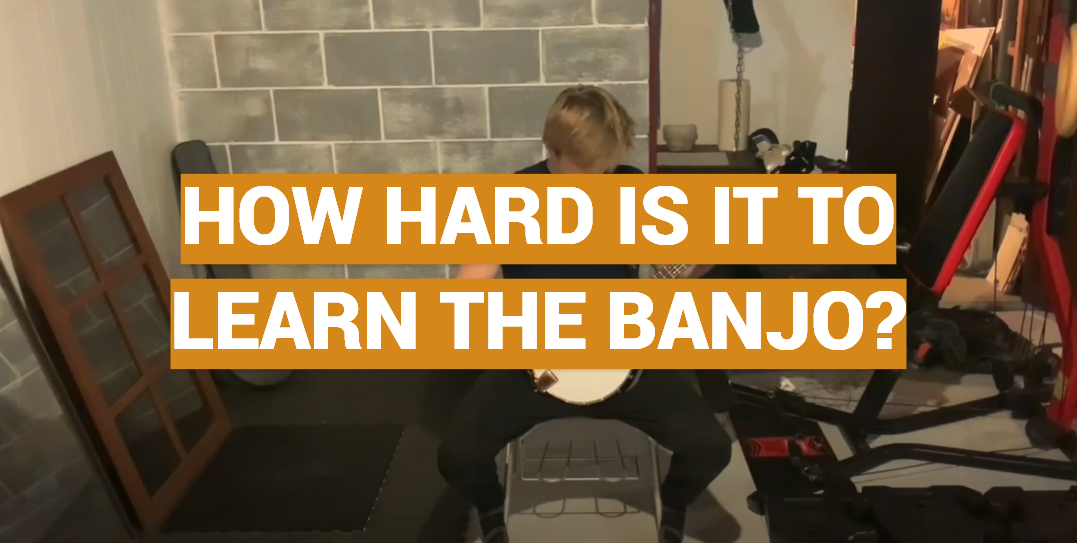


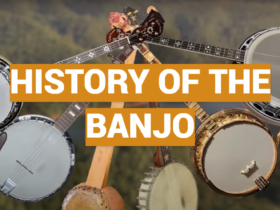

Leave a Reply